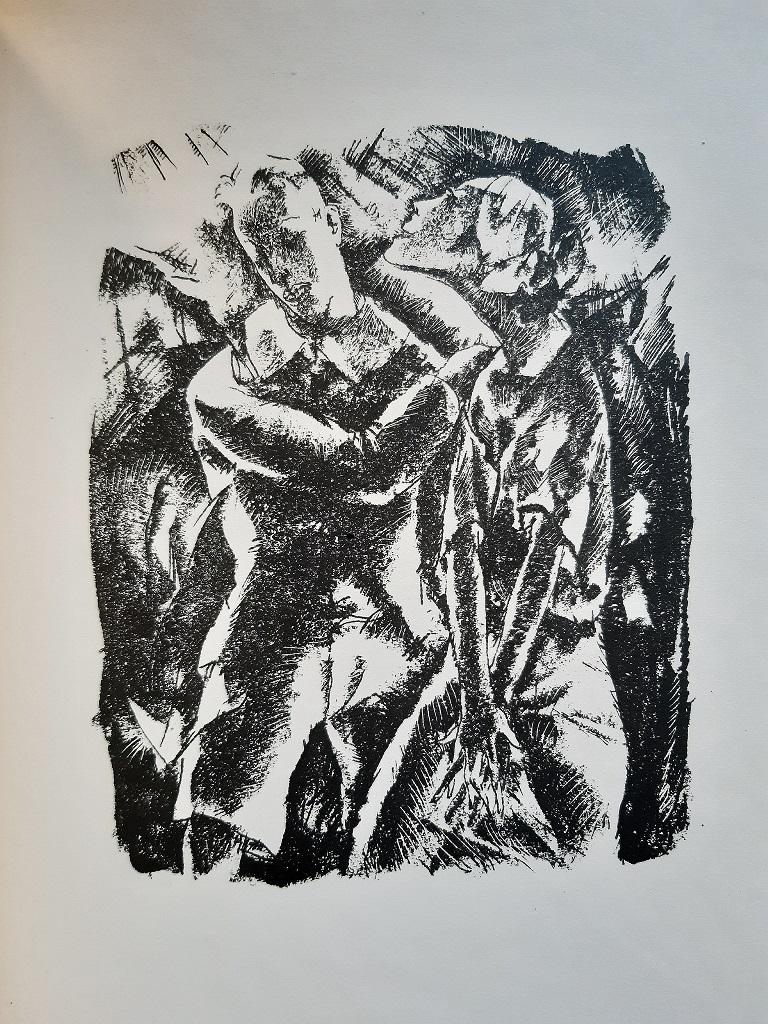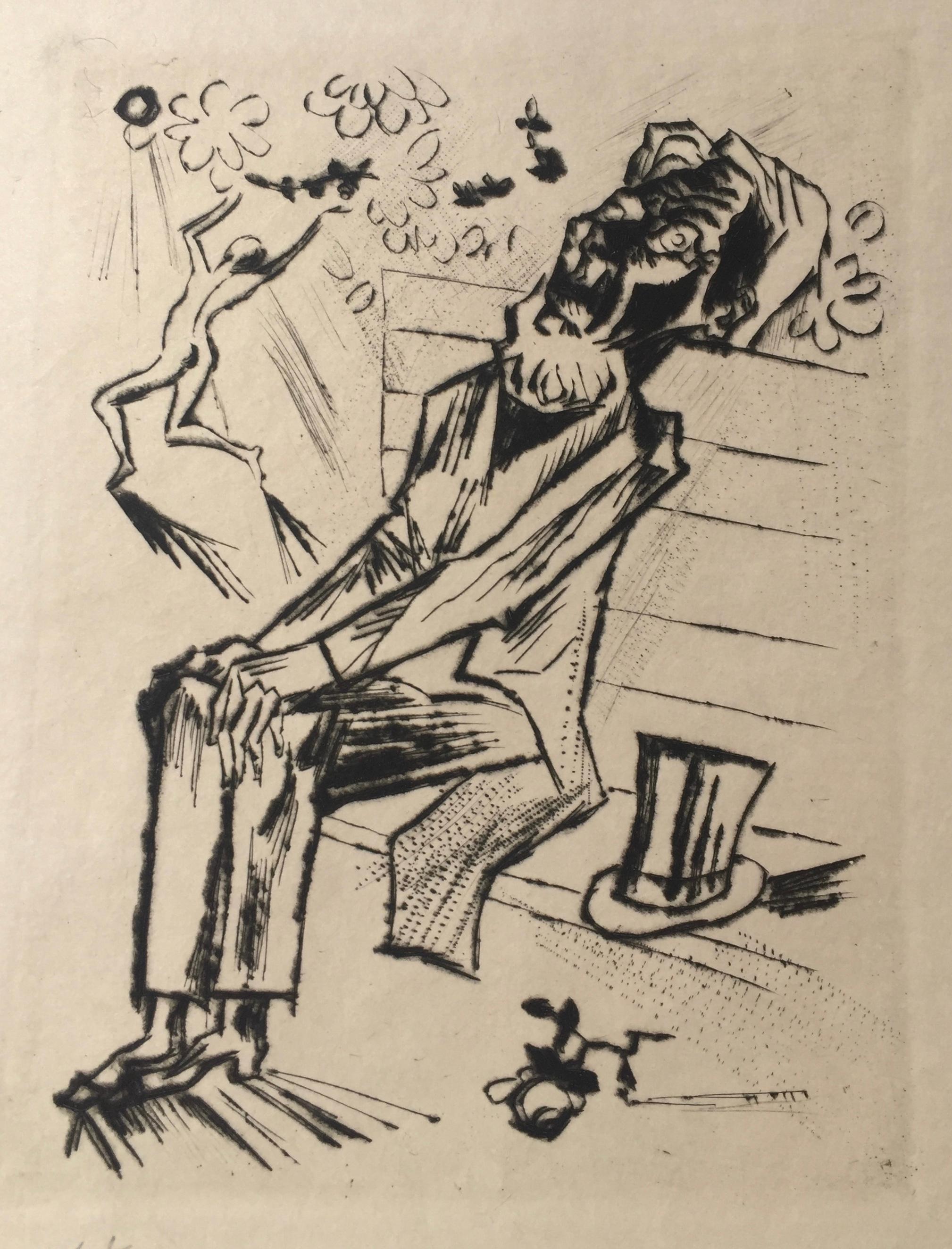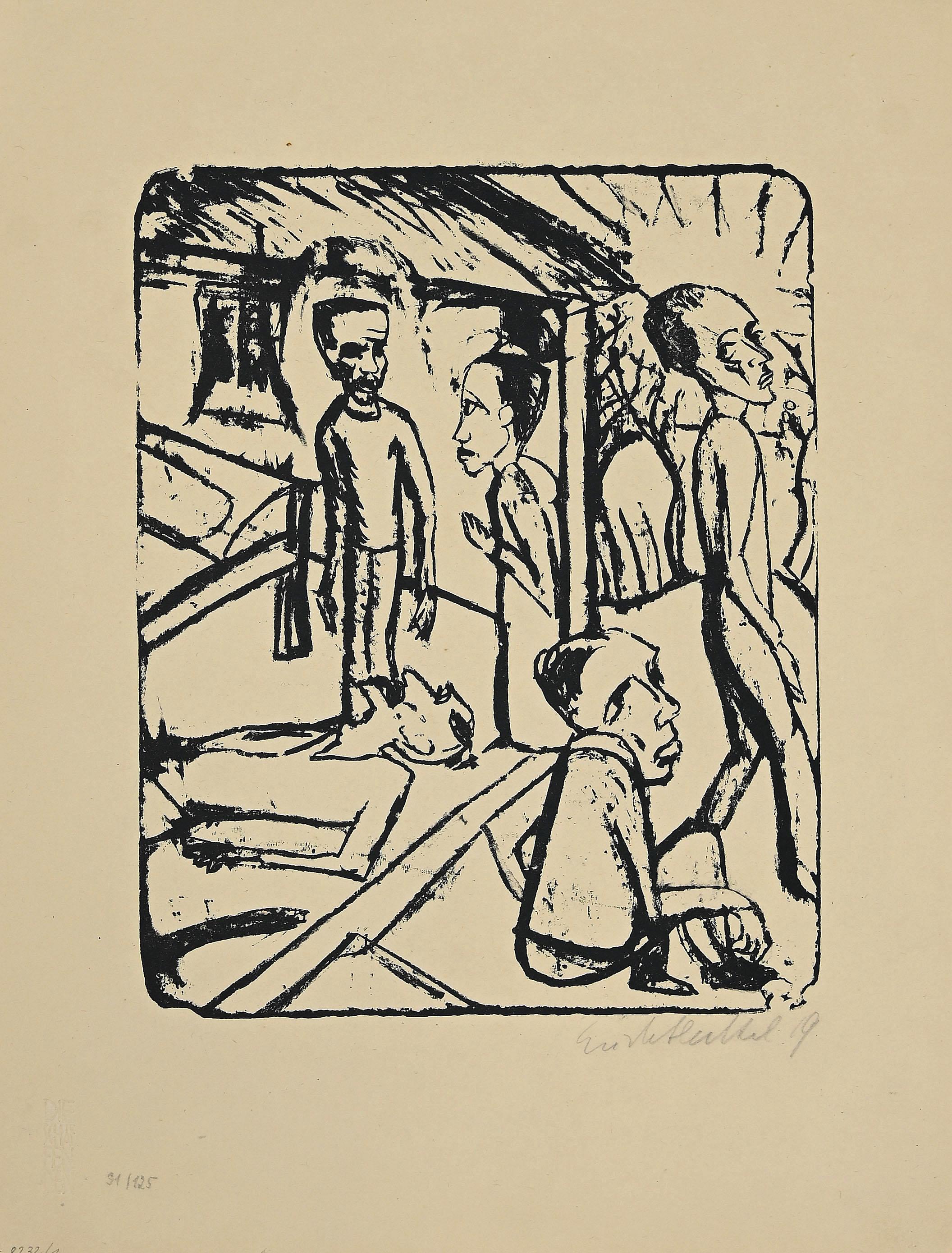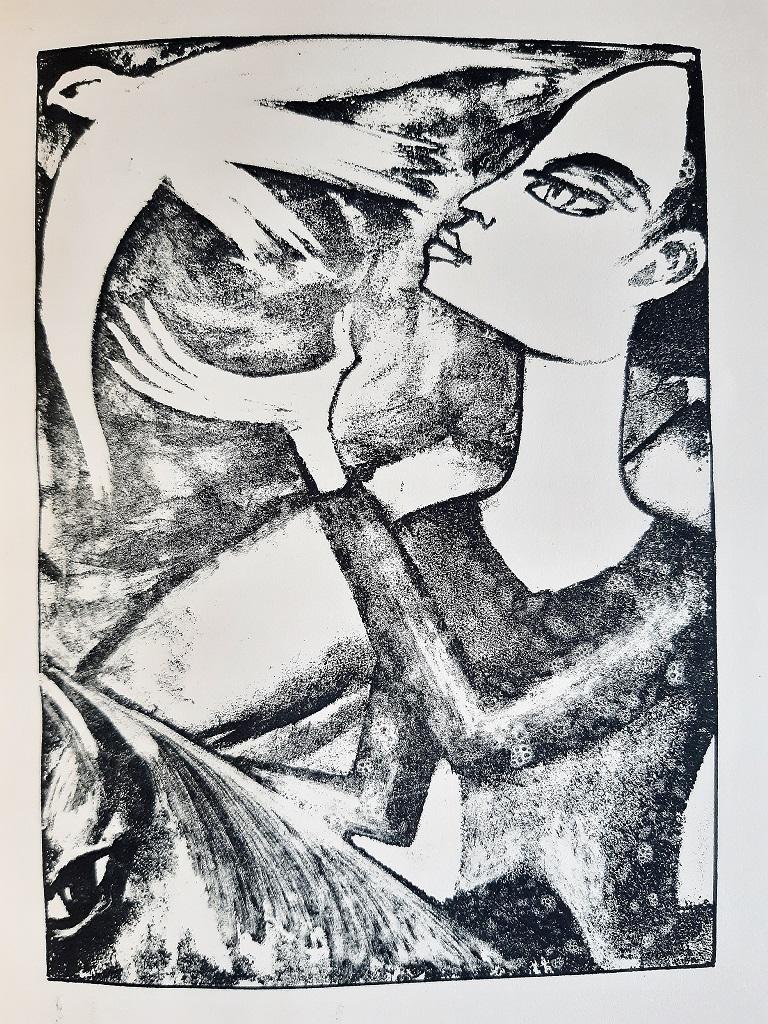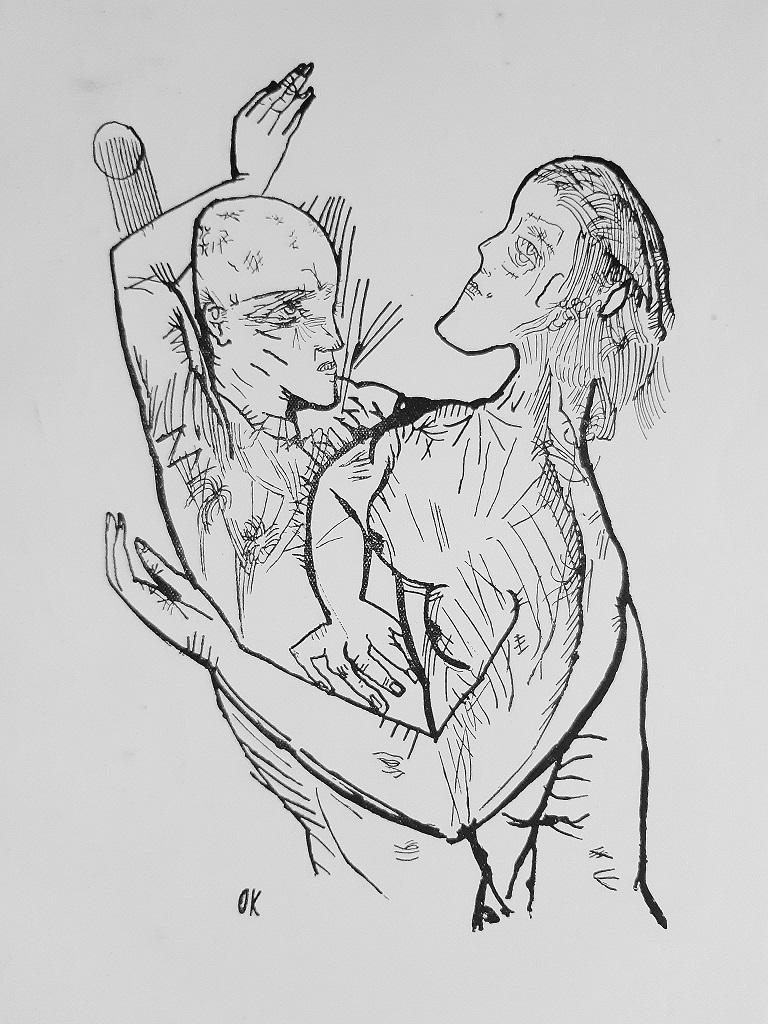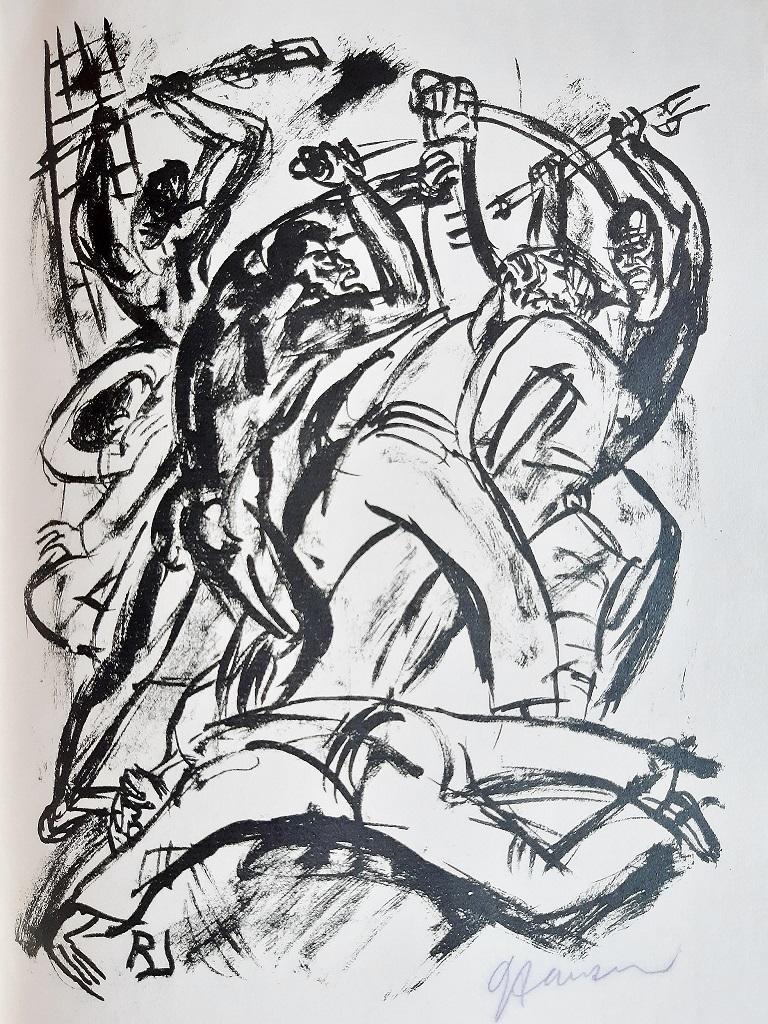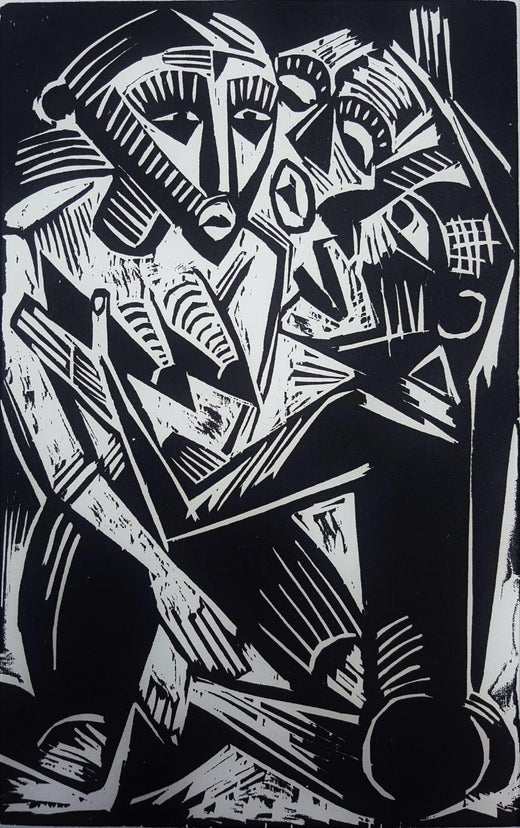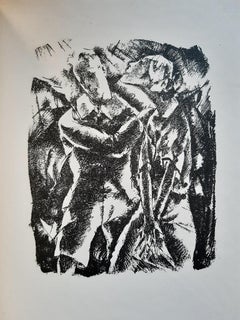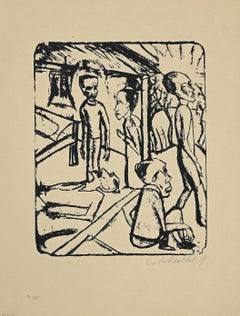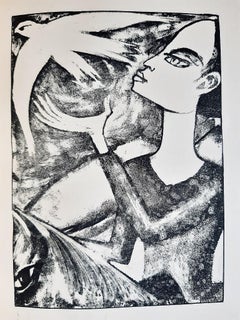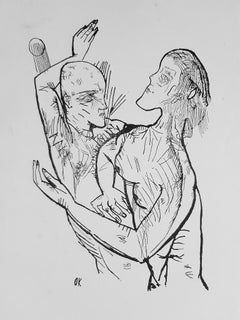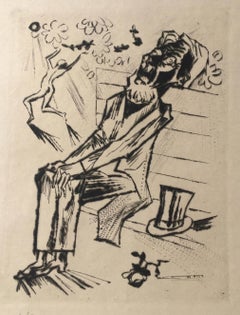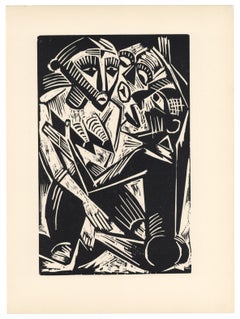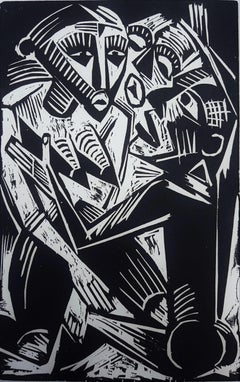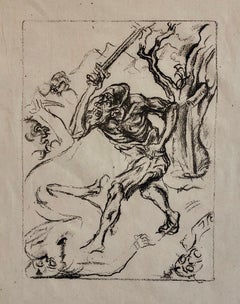Items Similar to Die Grosse Befehl - Illustrated Book by Max Pechstein - 1933
Want more images or videos?
Request additional images or videos from the seller
1 of 9
Hermann Max PechsteinDie Grosse Befehl - Illustrated Book by Max Pechstein - 19331933
1933
$238.75
£175.90
€200
CA$328.60
A$364.63
CHF 192.33
MX$4,451.38
NOK 2,433.41
SEK 2,279.08
DKK 1,522.41
About the Item
Die Grosse Befehl is an original Rare Book illustrated by Hermann Max Pechstein (Zwickau, December 31, 1881 – Berlin, June 29, 1955) and written by Johannes Schönherr in 1933.
Original First Edition in this Version.
Published by Buchergilde Gutenberg, Wien, Prague, Zurich, Berlin.
Format: in 8°. The dimensions and the weight are indicative.
The book includes 206 pages with Several full page Illustrations.
Good conditions.
Hermann Max Pechstein (Zwickau, December 31, 1881 – Berlin, June 29, 1955) and written by Johannes Schönherr in 1933.
Hermann Max Pechstein (Zwickau, December 31, 1881 – Berlin, June 29, 1955) was a German expressionist painter and printmaker, and a member of the Die Brücke group. Beginning in 1933, Pechstein was vilified by the Nazis because of his art. He was banned from painting or exhibiting his art and later that year was fired from his teaching position. A total of 326 of his paintings were removed from German museums. Sixteen of his works were displayed in the Entartete Kunst (Degenerate Art) exhibition of 1937. During this time, Pechstein went into seclusion in rural Pomerania. He was reinstated in 1945, and subsequently won numerous titles and awards for his work. He was a prolific printmaker, producing 421 lithographs, 315 woodcuts and linocuts, and 165 intaglio prints, mostly etchings.
- Creator:Hermann Max Pechstein (1881 - 1955, German)
- Creation Year:1933
- Dimensions:Height: 9.85 in (25 cm)Width: 5.91 in (15 cm)Depth: 0.4 in (1 cm)
- Medium:
- Movement & Style:
- Period:
- Condition:Insurance may be requested by customers as additional service, contact us for more information.
- Gallery Location:Roma, IT
- Reference Number:Seller: T-1286021stDibs: LU65039478892
Hermann Max Pechstein
Pechstein was born in Zwickau, the son of a craftsman who worked in a textile mill. Early contact with the art of Vincent van Gogh stimulated Pechstein's development toward expressionism. After studying art first at the School of Applied Arts and then at the Royal Art Academy in Dresden, Pechstein met Erich Heckel and joined the art group Die Bru¨cke in 1906. He was the only member to have formal art training. Later in Berlin, he helped to found the Neue Sezession and gained recognition for his decorative and colorful paintings that were lent from the ideas of Van Gogh, Matisse, and the Fauves. His paintings eventually became more primitivist, incorporating thick black lines and angular figures. From in 1933, Pechstein was vilified by the Nazis because of his art. A total of 326 of his paintings were removed from German museums. Sixteen of his works were displayed in the Entartete Kunst (Degenerate Art) exhibition of 1937. During this time, Pechstein went into seclusion in rural Pomerania. He was a prolific printmaker, producing 421 lithographs, 315 woodcuts and linocuts, and 165 intaglio prints, mostly etchings. Pechstein was a professor at the Berlin Academy for ten years before his dismissal by the Nazis in 1933. He was reinstated in 1945, and subsequently won numerous titles and awards for his work. He died in West Berlin. He is buried on the Evangelischer Friedhof Alt-Schmargendorf in Berlin.
About the Seller
4.9
Platinum Seller
Premium sellers with a 4.7+ rating and 24-hour response times
1stDibs seller since 2017
7,647 sales on 1stDibs
Typical response time: 2 hours
- ShippingRetrieving quote...Shipping from: Roma, Italy
- Return Policy
Authenticity Guarantee
In the unlikely event there’s an issue with an item’s authenticity, contact us within 1 year for a full refund. DetailsMoney-Back Guarantee
If your item is not as described, is damaged in transit, or does not arrive, contact us within 7 days for a full refund. Details24-Hour Cancellation
You have a 24-hour grace period in which to reconsider your purchase, with no questions asked.Vetted Professional Sellers
Our world-class sellers must adhere to strict standards for service and quality, maintaining the integrity of our listings.Price-Match Guarantee
If you find that a seller listed the same item for a lower price elsewhere, we’ll match it.Trusted Global Delivery
Our best-in-class carrier network provides specialized shipping options worldwide, including custom delivery.More From This Seller
View AllFruhlingsErwachen - Rare Book Illustrated by Willi Geiger - 1920
By Willi Geiger
Located in Roma, IT
FruhlingsErwachen is an original modern rare book written by Benjamin Franklin Wedekind (1864 – 1918) and illustrated by Willi Geiger (Landshut, 1878 ...
Category
1920s Expressionist More Art
Materials
Paper, Lithograph
The Brothers Karamazov - Lithograph by E. Heckel - 1919
By Erich Heckel
Located in Roma, IT
Original title: Die Bruder Karamasov
This original lithograph is hand signed and dated in pencil on the lower right. Edition of 125 prints.
Representing a scene from Dostojewski's novel "The Brothers Karamazov...
Category
1910s Expressionist Figurative Prints
Materials
Lithograph
Die sage von Sankt Julian dem Gastfreien - Rare book by Max Kaus - 1919
By Max Kaus
Located in Roma, IT
Die sage von Sankt Julian dem Gastfreien is an original modern rare book written by Gustave Flaubert and illustrated by Max Kaus (1891 - 1977) in 1919.
Original First Edition / Seco...
Category
1910s Expressionist More Art
Materials
Paper, Lithograph
Mörder Hoffnung der Frauen - Rare Book Illustrated by Oskar Kokoschka - 1916
By Oskar Kokoschka
Located in Roma, IT
Mörder hoffnung der frauen (Murderer, Hope of Women) is an original modern rare book illustrated by Oskar Kokoschka (Pöchlarn, 1886 – Montreux, 1980) in 1916.
Original deluxe editio...
Category
1910s Expressionist More Art
Materials
Paper, Etching
Tamango - Rare Book Illustrated by Richard Janthur - 1922
Located in Roma, IT
Tamango is an original modern rare book written by Prosper Mérimée in 1922 and illustrated by Richard Janthur (Zerbst, 1883 - Berlin, 1956).
Original First Italian Edition.
Publis...
Category
1920s Modern More Art
Materials
Paper, Lithograph
Juin 40 - Rare Book Illustrated by Frans Masereel - 1912
By Frans Masereel
Located in Roma, IT
Juin 40 is an original Rare Book illustrated by Frans Masereel (1889 – 1972) in 1912.
Original Edition.
Précédé de “Fragments d’un journal de guerre 1940” de Henry de Montherlant.
1550 numbered copies.
Published by Pierre Tisné, Paris.
Format: Oblong 4°. The dimensions and the weight are indicative.
The book includes 32 + 7 Pages with 32 Full page Lithographs.
Good conditions.
Frans Masereel (1889 – 1972). He was a Flemish painter and graphic artist who worked mainly in France, known especially for his woodcuts focused on political and social issues, such as war and capitalism. He completed over 40 wordless novels in his career, and among these, his greatest is generally said to be Passionate Journey. Masereel's woodcuts influenced Lynd Ward and later graphic artists such as Clifford Harper, Eric Drooker, and Otto Nückel. Masereel's woodcuts influenced Lynd Ward and later graphic artists such as George Walker, Clifford Harper, Eric Drooker, and New Yorker cartoonist Peter Arno. Masereel's woodcut series, mainly of sociocritical content and expressionistic in form, made Masereel internationally known. Among them were the wordless novels 25 Images of a Man's Passion (1918), Passionate Journey (1919), The Sun (1919), The Idea (1920), Story Without Words (1920), and Landscapes and Voices (1929). At that time Masereel also drew illustrations for famous works of world literature by Thomas Mann, Émile Zola, and Stefan Zweig.
Category
1940s Modern More Art
Materials
Lithograph
You May Also Like
DER SCHATTEN II - Rich Drypoint - 1st State
By Hermann Max Pechstein
Located in Santa Monica, CA
MAX PECHSTEIN (1881 -1955)
DER SCHATTEN II 1918 (Knupp 79, Fecher 143 I/ii)
Rich drypoint, signed and annotated, FIRST STATE. Image: 8 1/4 x 6 inches on japan paper; 15 x 11 1/4 i...
Category
1910s Expressionist Figurative Prints
Materials
Drypoint
"Woman Desired by Man" original woodcut
By Max Pechstein
Located in Henderson, NV
Medium: original woodcut. Printed in 1920 for the Deutsche Graphiker der Gegenwart portfolio, and published in Leipzig by Klinkhardt & Biermann in an edition of 500. Catalogue refere...
Category
1920s Expressionist Figurative Prints
Materials
Woodcut
Weib Vom Manne Begehrt (Woman Desired by Man) /// Max Pechstein Woodcut Modern
By Hermann Max Pechstein
Located in Saint Augustine, FL
Artist: Hermann Max Pechstein (German, 1881-1955)
Title: "Weib Vom Manne Begehrt (Woman Desired by Man)"
Portfolio: Deutsche Grapiker der Gegenwart (German Printmakers of Our Time)
*Unsigned edition
Year: 1919, (published 1920)
Medium: Original Woodcut Engraving on cream wove paper
Limited edition: 500, (there was also a signed and numbered edition of 30)
Printer: Unknown
Publisher: Klinkhardt & Biermann, Leipzig, Germany
Reference: "Das Graphische Werk Max Pechsteins" - Krüger No. 224; Fechter No. 157; Rifkind No. 2252; Söhn I, page 108-114
Framing: Recently beautifully framed in a modern gold moulding with 100% cotton rag matting and Museum Glass
Framed size: 19.69" x 16.13"
Sheet size: 12.75" x 9.5"
Image size: 9.88" x 6.25"
Condition: One small skillfully repaired tear lower left in margin. It is otherwise a strong impression in excellent condition
Notes:
Provenance: private collection - Kiel, Germany. Comes from the 1920 "Deutsche Grapiker der Gegenwart (German Printmakers of Our Time)" portfolio of fifteen lithographs, eight woodcuts, eight reproductions, and one lithographed cover by various artists. The artists who contributed to this portfolio were George Grosz, Ernst Barlach, Lovis Corinth, Richard Seewald, Heinrich Campendonk, Erich Heckel, Otto Mueller, Karl Schmidt-Rottluff, Lyonel Feininger, Conrad Felixmüller, Max Unold, Karl Caspar, Max Lieberman, René Beeh, Adolf Ferdinand Schinnerer, Ludwig Meidner, Max Beckmann, Richard Seewald, Käthe Kollwitz, August Gaul, Rudolf Grossman, Alfred Kubin, and Paul Klee. This very same work is within many permanent museum collections including the Museum of Modern Art, New York, NY.
"Deutsche Graphiker der Gegenwart (German Printmakers of Our Time)" brings together woodcuts, lithographs, and reproductions by thirty-one artists representing a cross-section of styles from Impressionism to Expressionism, uniting under a single cover works ranging from naturalistic self-portraits to left-wing political caricatures. It features works by artists associated with the Berlin Secession (an exhibiting society comprised primarily of German Impressionists), with Expressionist groups like the Brücke and Der Blaue Reiter, and with the political Novembergruppe, as well as artists like Max Beckmann who were not affliliated with any group.
In his introduction, art historian Kurt Pfister identified Expressionism as the leading force in German art at the time, while stressing the plurality of approaches to style and subject matter that the movement encompassed. Pfister emphasized the openness of German artists to foreign sources, and cited the importance of Paul Cézanne, Edvard Munch, and Pablo Picasso as well as Japanese, Indian, African, and Gothic art for the development of German art. There was a fifty-year difference in age between the oldest artist, Max Liebermann, and the youngest, Conrad Felixmüller, featured in the collection. The volume also included Lyonel Feininger, an American who had lived in Germany since 1896, as well as Austrian artists Oskar Kokoschka and Alfred Kubin.
Biography:
Pechstein was born in Zwickau, the son of a craftsman who worked in a textile mill. Early contact with the art of Vincent van Gogh stimulated Pechstein's development toward expressionism. After studying art first at the School of Applied Arts and then at the Royal Art Academy in Dresden, Pechstein met Erich Heckel and joined the art group Die Bru¨cke in 1906. He was the only member to have formal art training. Later in Berlin, he helped to found the Neue Sezession and gained recognition for his decorative and colorful paintings that were lent from the ideas of Van Gogh, Matisse, and the Fauves. His paintings eventually became more primitivist, incorporating thick black lines and angular figures.
From in 1933, Pechstein was vilified by the Nazis because of his art. A total of 326 of his paintings were removed from German museums. Sixteen of his works were displayed in the Entartete Kunst (Degenerate Art...
Category
1920s Expressionist Nude Prints
Materials
Woodcut, Engraving
Jakob Steinhardt Jewish German Expressionist Lithograph Israeli Early Bezalel
By Jacob Steinhardt
Located in Surfside, FL
plate signed.
Jacob Steinhardt
1887-1968
Steinhardt, Jakob, Painter and Woodcut Artist. b. 1887, Yaacov Steinhardt was born in the then remote, largely Polish town of Zerkow in the Posen District of Germany. (poland/german) Immigrated 1933. Studies: 1906 School of Art, 1906 Studied in Berlin Arts and Crafts School. Berlin; 1907 painting with Lovis Corinth and engraving and etching with Hermann Struck; advanced studies, 1908-10 Paris, with Henri Matisse and Steinlen; 1911 Italy. Teaching: Bezalel, Jerusalem, 1953-57 Director. 1910 Participated in the “New Sezession”, Berlin. 1912 together with Ludwig Meidner and Janthur he founded the "Pathetiker" group very early in the German expressionist movement. Running afoul of the Nazis, he fled to Tel-Aviv and then Jerusalem in the early 30s, showing in “Der Sturm” Gallery. 1914 Exhibited with ludwig Meidner at first Expressionist Exhibition in Berlin. Worked mainly in woodcuts depicting biblical and other Jewish subjects. 1955-58 International awards for his woodcuts. receives graphic commissions from Fritz Gurlitt. 1922 Marries Minni Gumpert. Active in organizing Secession exhibits. 1925 Trips to Mark Brandenburg and Holy Land. Turns primarily to painting; stops work on etchings and lithographs. 1933 Emigrates to the Palestine. 1934 Moves to Jerusalem and opens an art school; attempts some etchings. 1948 Closes the art school and becomes Chairman of Graphics Department, Bezalel School for Arts and Crafts. 1954-57 Director of Bezalel School for Arts and Crafts. Taken up by J. B. Neumann who became the agent for his etchings. Exhibited Sturm Gallery, Herbst-salon. 1914 Outbreak of World War I; Steinhardt enlists in German army. 1916-18 First on Eastern Front in Poland and Lithuania, then after short training period in Berlin, sent to Macedonia. 1917 Exhibition of Lithuanian drawings at Berlin Secession in Spring. Elected member of the Secession.
He often used wood-cutting techniques that were popular amongst German Expressionists. Steinhardt was driven to express ideas clearly and decisively through art.
Amongst the themes found in his work the prophets of the Bible, such as Jonah, are noticeable. Steinhardt identified deeply with Jonah due to his attempt to run from God's call to duty.
Additionally, the image of beggars was often found in Steinhardt's works and in his artistic presentation of the less fortunate, the artist's love for his fellow man becomes evident.
Moreover, the grotesque was a theme noticeable in Steinhardt's earliest pieces. These were fantastical images; it was unclear whether or not they were human or demon. In the 1950's, Steinhardt returned to these images upon learning of the Holocaust of Europe's Jews. At that time he resided in New York and there, in the shadow of the skyscrapers, Steinhardt's reaction to WWII was expressed through his art.
A Collection of Works by Artists of the Land of IsraelThe Bezalel National Museum, Jerusalem 1940 Artists: Shemi, Menahem Rubin...
Category
20th Century Expressionist Figurative Prints
Materials
Woodcut
"Krankes Mädchen" original woodcut
By Erich Heckel
Located in Henderson, NV
Medium: original woodcut. Printed in 1920 for the Deutsche Graphiker der Gegenwart portfolio, and published in Leipzig by Klinkhardt & Biermann in an edition of 500. Catalogue refere...
Category
1920s Expressionist Figurative Prints
Materials
Woodcut
Weiblicher Akt
By Max Pechstein
Located in New York, NY
A very good impression of this scarce, early lithograph on Japan paper. Signed in pencil by Pechstein.
Category
1960s Expressionist Figurative Prints
Materials
Lithograph
More Ways To Browse
Dali Virgil Last Words
David Hockney Blue Guitar
David Hockney Yves Marie
David Schluss Serigraph
David Shrigley Black Cats
Die Zauberflote Poster
Dior Bobby East West
Disco Mirror Ball
Drew Straker
Emilie Floge
Ernie Barnes On Sale
Erte Aphrodite
Erte Autumn
Erte Diana
Erte Letter R
Erte Zsa Zsa
Fabio Mauroner
Faith Ringgold Groovin High
